MITgcm on Ice
In a recent paper in the Journal of Physical Oceanography, An Nguyen (MIT) and co-authors Ronald Kwok (JPL) and Dimitris Menemenlis (JPL) report on work using MITgcm to better understand the origin and character of the western arctic, upper halocline.
Modeling the Ocean Response to Hurricanes
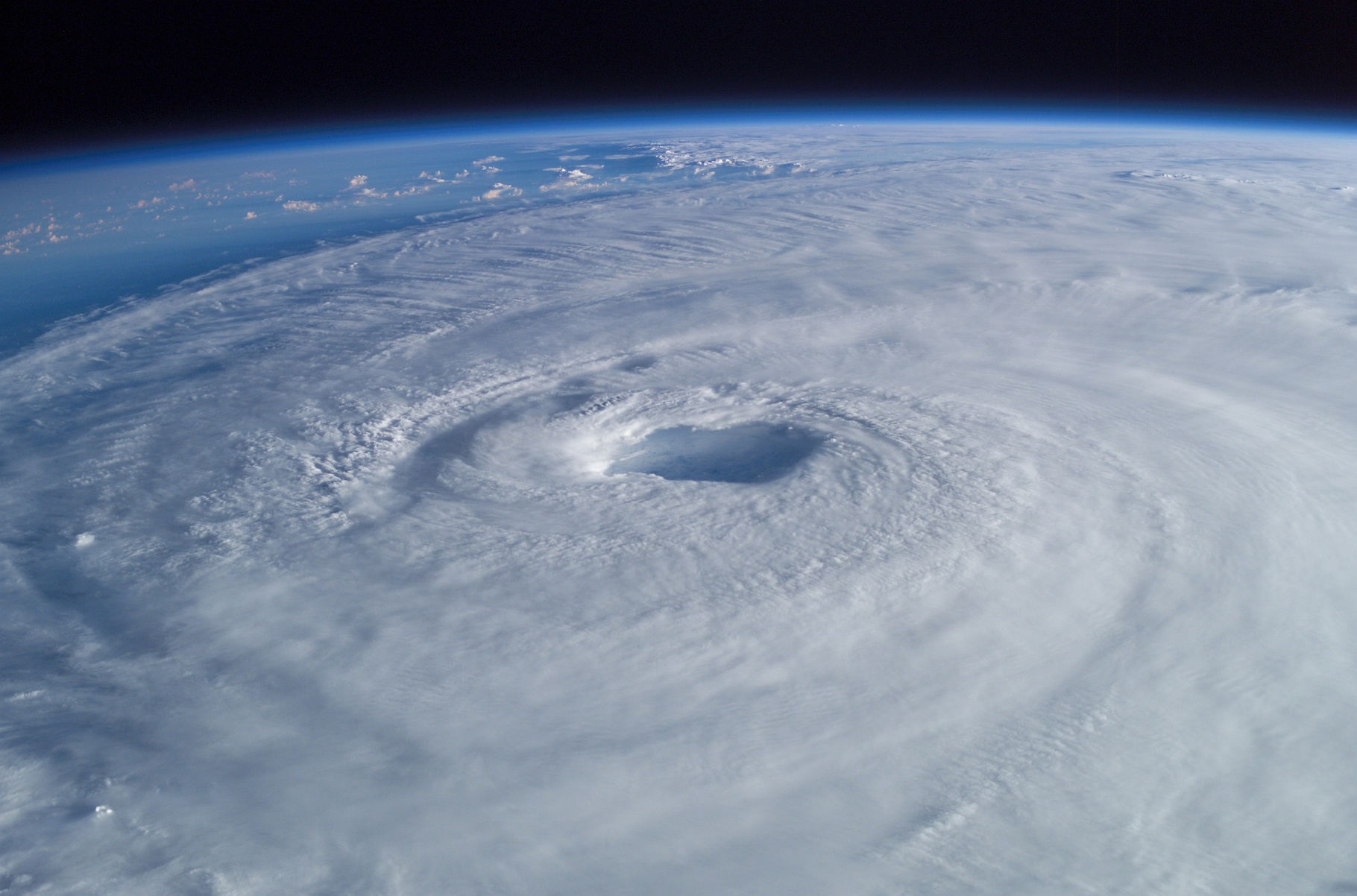 Familiar as we are with satellite images of hurricanes, the impact of these powerful storms on the upper ocean is markedly less visible. Dr Sarah Zedler (Texas A&M University) has been using MITgcm to help understand the features that appear in oceanic field data as a result of hurricane passage above.
Familiar as we are with satellite images of hurricanes, the impact of these powerful storms on the upper ocean is markedly less visible. Dr Sarah Zedler (Texas A&M University) has been using MITgcm to help understand the features that appear in oceanic field data as a result of hurricane passage above.
Adjoint approaches to assessing local vulnerability to buoyant surface plumes
![]() Prompted by the recent spill in the Gulf of Mexico, Ross Tulloch, Chris Hill and Oliver Jahn have been using MITgcm to compute the vulnerability of individual locations to remote buoyant surface plumes.
Prompted by the recent spill in the Gulf of Mexico, Ross Tulloch, Chris Hill and Oliver Jahn have been using MITgcm to compute the vulnerability of individual locations to remote buoyant surface plumes.
Modeling Nordic Seas
 This month we look at work by Tom Haine, Professor of Physical Oceanography at Johns Hopkins University who is using MITgcm to model high-frequency fluctuations in the flow through the Denmark Strait…
This month we look at work by Tom Haine, Professor of Physical Oceanography at Johns Hopkins University who is using MITgcm to model high-frequency fluctuations in the flow through the Denmark Strait…
Ocean Tomography
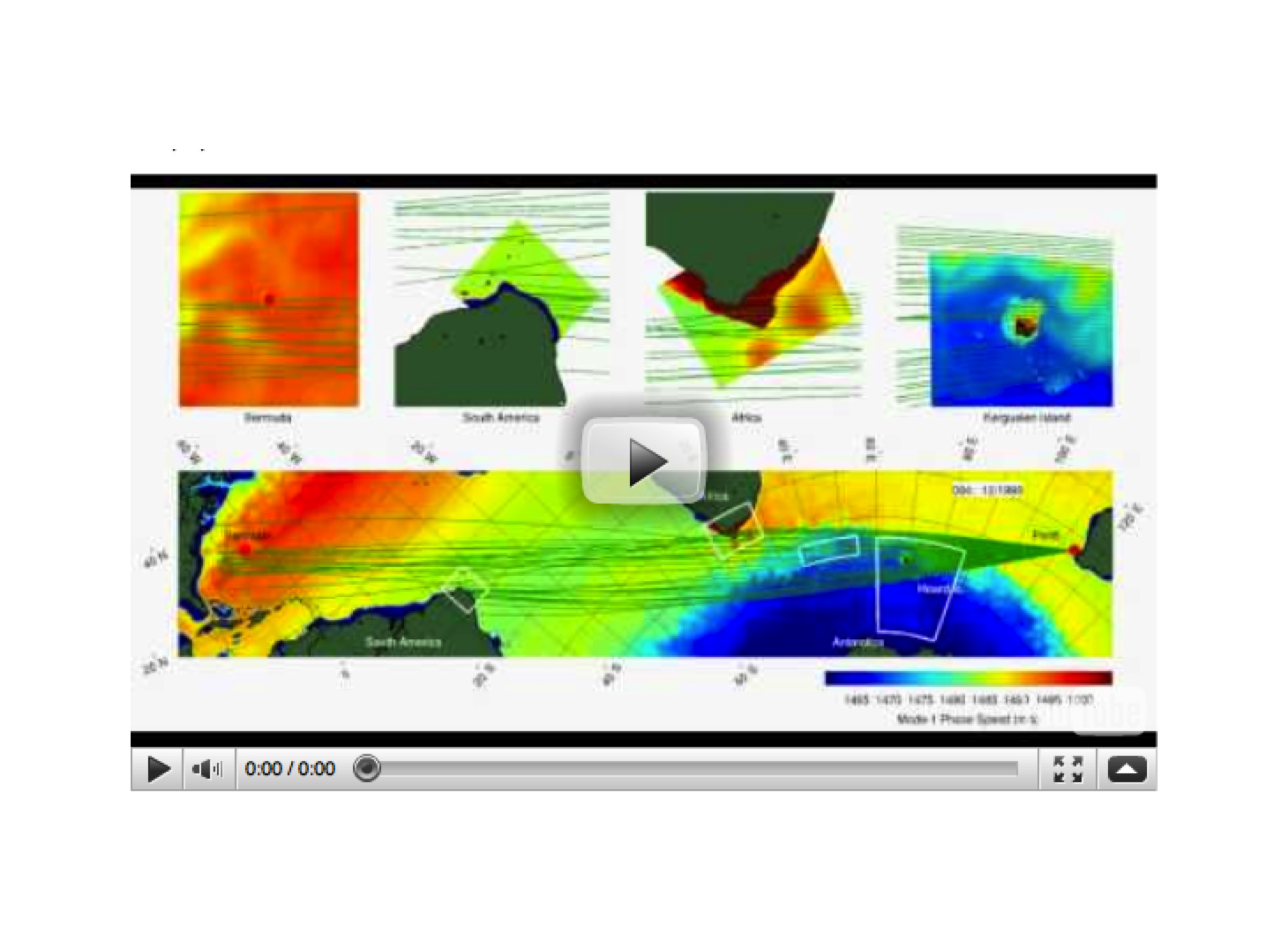 Brian Dushaw has been looking at the MITgcm ECCO2 state-estimates with help from Dimitris Menemenlis. Brian finds that by using the hydrography from the state-estimate, together with some enhanced resolution bathymetric data in key regions, he can reconstruct acoustic paths between Perth and Bermuda that were first measured in the 1960s. Previous ray-tracing efforts to reproduce this observed pathway computationally have not succeeded ….
Brian Dushaw has been looking at the MITgcm ECCO2 state-estimates with help from Dimitris Menemenlis. Brian finds that by using the hydrography from the state-estimate, together with some enhanced resolution bathymetric data in key regions, he can reconstruct acoustic paths between Perth and Bermuda that were first measured in the 1960s. Previous ray-tracing efforts to reproduce this observed pathway computationally have not succeeded ….
OCCA
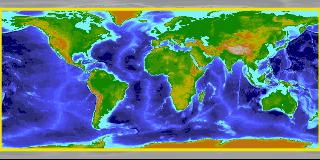 This month we focus on work by Gael Forget and the ECCO team who have been using MITgcm to construct a new ocean atlas. By using MITgcm as a means of optimally synthesising data within the framework of a physically accurate general circulation model, OCCA (short for OCean Comprehensible Atlas) provides a singularly accurate 3-year “snap-shot” of the global ocean state for the period December 2003 to November 2006…
This month we focus on work by Gael Forget and the ECCO team who have been using MITgcm to construct a new ocean atlas. By using MITgcm as a means of optimally synthesising data within the framework of a physically accurate general circulation model, OCCA (short for OCean Comprehensible Atlas) provides a singularly accurate 3-year “snap-shot” of the global ocean state for the period December 2003 to November 2006…
Anthropogenic CO2 transport in the Southern Ocean.
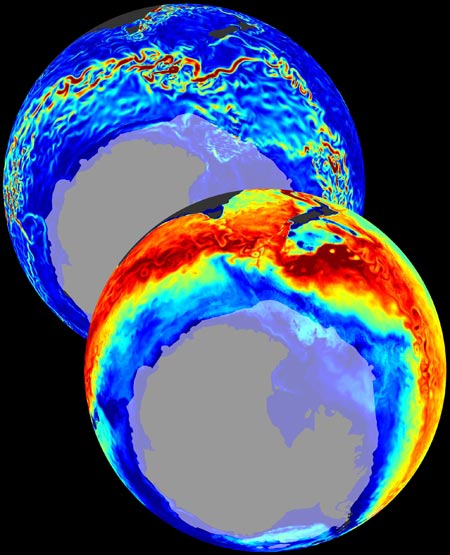 Taka Ito, Molly Woloszyn and Matt Mazloff have been studying anthropogenic CO2 transport in the Southern Ocean. Using MITgcm’s adjoint and offline capabilities, the team find a clear correlation between the pattern of carbon uptake and oceanic vertical exchange in strong support of wind-driven primary regulation of Southern Ocean ACO2 transport…
Taka Ito, Molly Woloszyn and Matt Mazloff have been studying anthropogenic CO2 transport in the Southern Ocean. Using MITgcm’s adjoint and offline capabilities, the team find a clear correlation between the pattern of carbon uptake and oceanic vertical exchange in strong support of wind-driven primary regulation of Southern Ocean ACO2 transport…
Planet-in-a-Bottle
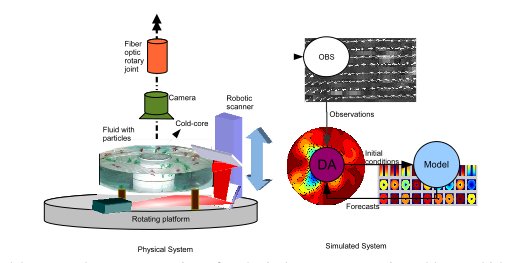
Work by Sai Ravela, John Marshall, Chris Hill, Andrew Wong and Scott Stransky in which they use MITgcm to provide the virtual analogue for a fluid lab experiment in the physical laboratory. This is part of an effort to demonstrate how to achieve real-time model-data synthesis, using measurements from a roboticaly controlled automated sensor system…
